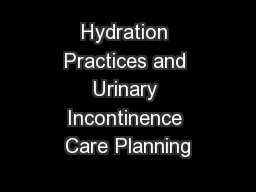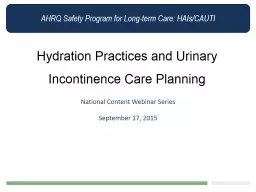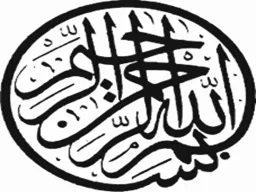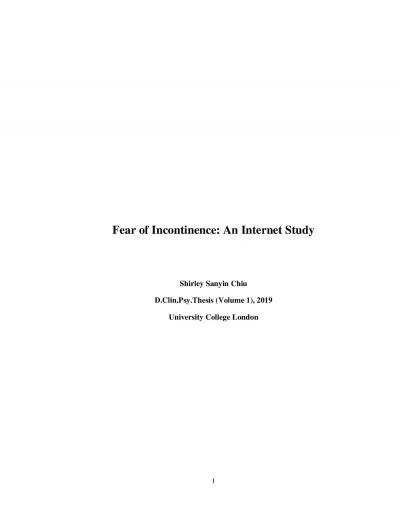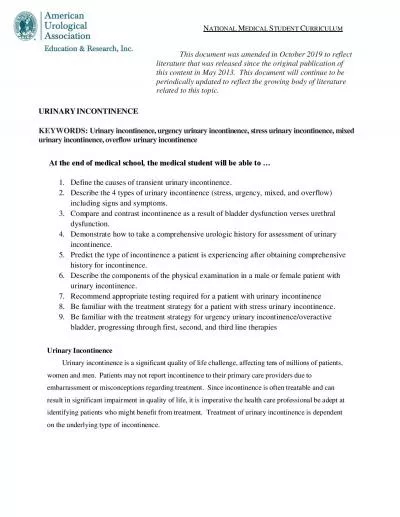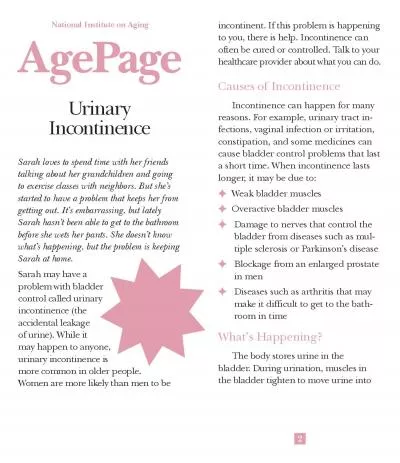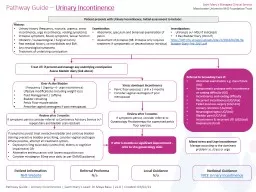PPT-Urinary Incontinence Project ECHO
Author : tawny-fly | Published Date : 2018-03-12
Department of Geriatric Medicine John A Burns School of Medicine July 12 2017 Case Mrs Kim is a 65 year old lady who works at the perfume shop at the mall She reports
Presentation Embed Code
Download Presentation
Download Presentation The PPT/PDF document "Urinary Incontinence Project ECHO" is the property of its rightful owner. Permission is granted to download and print the materials on this website for personal, non-commercial use only, and to display it on your personal computer provided you do not modify the materials and that you retain all copyright notices contained in the materials. By downloading content from our website, you accept the terms of this agreement.
Urinary Incontinence Project ECHO: Transcript
Download Rules Of Document
"Urinary Incontinence Project ECHO"The content belongs to its owner. You may download and print it for personal use, without modification, and keep all copyright notices. By downloading, you agree to these terms.
Related Documents


